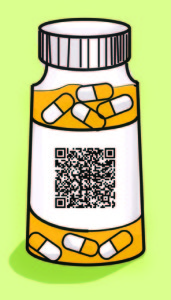The traditional lecture-based format of medical education has become obsolete, according to two Stanford faculty researchers who have instead put forward a proposal for medical education in the 21st century.
The model — devised by Chip Heath ‘91, a professor in the Graduate School of Business (GSB) and Charles Prober, a professor at the School of Medicine — focuses on shifting large lecture-based classes to 10 to 15 minute videos online and using the resulting class time to work in small groups on application problems of the material — a “flipped classroom model” that makes material more “sticky.”

“The average attention span to listen to a message is between 10 and 15 minutes before the mind wanders,” Prober said. “We want to take advantage of this limited attention span and large class size and move it onto a smaller stage.”
An online platform for lectures also offers students greater flexibility, according to Prober. Students may watch videos as many times as they want, and may do so whenever and wherever it is most convenient for them. Videos are also broken up into segments chosen to match the average attention span.
Quizzes can also be embedded into videos to further enhance instruction, Prober added, noting that the computer science department already does so.
“Student responses can be tracked to indicate to the learner or teacher that acquisition of material has occurred,” Prober said.
Online classes are “not a novel idea,” he added, referring to the popular Khan Academy tutorials. The School of Medicine has also been videotaping classes for 28 years.
“[Those] videos are not designed to be watched in digestible parts,” Prober conceded. “Many students prefer watching lectures online so optimizing the structure of videos then makes sense. We might as well make the delivery mechanism better.”
After watching the videos and grasping the key concepts, students would then come to class for smaller group interaction.
In one such interaction for a medical class, “you might be given a patient who has a disorder,” Prober said. “Your understanding of that pathway [learned online] becomes more relevant to you.”
Medical education specifically can capitalize on this model, Prober said.
“There’s nothing more profound than the narrative of a patient story,” he argued, referencing medically based television programs — such as “Grey’s Anatomy” or “House” — popular with the general population.
“In medicine, medical students get hungry real quickly for understanding of where the first two years are taking them,” Prober said. “It can be hard to appreciate where that will connect to what you’ll be doing as a doctor. The more you can create that appreciation in this interactive way, the more the students will appreciate why they are learning. In doing so, the material will become more sticky.”
The School of Medicine adopted Prober and Heath’s “flipped classroom” approach for a biochemistry class last year. Compared to the year before — which used a traditional class lecture model — students gave more positive feedback and attended class in elevated numbers.
Prober argued that the model’s principles could be applied in the future to other academic disciplines across the University and in other institutions.
“There is and is going to be enthusiasm for making a change, but the flavor of change will vary across universities,” Prober said. “The notion of a new education model is not going to be a difficult sell, maybe just a difficult implementation.”